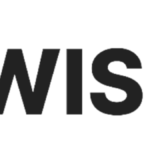
As a homeschooling parent, you are in an enviable position. You get to take charge of your child’s education and choose the content of each day’s lesson plan.
While you have the responsibility to make sure your teen can keep up with standardized tests in case they want to go to a Canadian university, how you get there is up to you. You can supplement these teachings with your very own lessons.
Credit is one such lesson that every parent should add to their homeschooling curriculum.
What Does Your Teen Need to Know About Credit?
Everybody uses credit, and it’s only a matter of time before your teen does as well. They’ll need a credit card or line of credit once they strike out on their own, and it’s your job to ensure they understand how to use these financial products carefully. Start your lesson plan from scratch by touching on the following ideas.
1. Defining Revolving Credit
Credit cards and lines of credit belong to a subsection of personal loans called revolving credit. They get this name due to the way you can access your loan.
Most personal loans close once you pay off the last cent you owe. A line of credit stays open, even after you pay everything back. You can access your credit limit on a revolving basis.
2. Explaining Compounding Interest
Compounding interest is another important lesson plan to include in your teen’s financial literacy. It’s one of the costs of borrowing, applied by the lender.
Compound interest applies to the outstanding balance of a line of credit, which increases what you owe once applied. The next time your lender applies interest, it will include the outstanding balance and the previous interest earned.
Compounding interest has an enormous impact on how much you owe, so it’s important you teach your teen about line of credit interest rates.
See how long it takes to find the best line of credit rate in Canada vs the most expensive rate for bad credit. Next, compare the line of credit interest rates in Canada against an outstanding balance of $2,000. You can use online calculators to see how different rates may increase or decrease how much they owe.
3. Warning Against the Minimum Payment
A minimum payment is unique to revolving financial products. It’s the least amount of money you have to pay to keep your line of credit open and avoid late fees.
Talking about the minimum is a great way to underscore your lesson about line of credit interest rates. Since the minimum won’t pay down the outstanding balance in a meaningful way, the majority of the balance carries over to the next billing statement. This means a larger balance will be used when calculating the interest.
Since relying on the minimum will increase their debt, it should only be used in emergencies. This would be a good opportunity to discuss the importance of budgeting and how to balance a household budget.
Make This Lesson Plan Your Own
Financial literacy is often absent in Canada’s public school systems, so take advantage of your homeschooling to shine a light on this topic. Use this guide to help you build the scaffolding of your lesson plan, but don’t be afraid to branch out and discuss other topics. The care you take in these lesson plans will help your teen grow up to be a pro at managing their money.



:max_bytes(150000):strip_icc()/Diamond-cut-5095047_color_b_rev_02_-db23dac29aa44f58a1e7aca0b75381f8.jpg)






